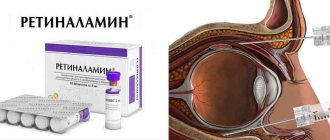Rabeloc, 20 mg, lyophilisate for the preparation of solution for intravenous administration, 85 g, 1 pc.
Drugs metabolized via cytochrome CYP450 isoenzymes
Rabeprazole sodium, like other proton pump inhibitors (PPIs), is metabolized by the cytochrome P450 (CYP450) system in the liver. in vitro studies
Using human liver microsomes, it was shown that rabeprazole sodium is metabolized by the isoenzymes CYP2C19 and CYP3A4.
Studies in healthy volunteers have shown that rabeprazole sodium has no pharmacokinetic or clinically significant interactions with drugs that are metabolized by the cytochrome P450 system - warfarin, phenytoin, theophylline and diazepam (regardless of whether patients metabolize diazepam extensively or poorly).
Warfarin.
There are reports of prolongation of the INR and PT in patients receiving concomitant PPIs, including rabeprazole and warfarin. Prolongation of INR and PT may lead to an increased risk of bleeding.
Cyclosporine.
in vitro
studies with human liver microsomes, rabeprazole was shown to inhibit the metabolism of cyclosporine with an inhibitory concentration of 50–62 μM, which is more than 50 times the Cmax in healthy volunteers after administration of 20 mg rabeprazole. This degree of inhibition was similar to that of omeprazole at equivalent concentrations.
Drugs whose absorption depends on gastric pH
Rabeprazole sodium provides a stable and long-lasting suppression of gastric acid secretion. Thus, interactions may occur with substances for which absorption is pH dependent. When taken simultaneously with rabeprazole sodium, the absorption of ketoconazole is reduced by 30%, and the absorption of digoxin is increased by 22%. Therefore, some patients should be monitored to determine whether dose adjustments are necessary when taking rabeprazole sodium concomitantly with ketoconazole, digoxin, or other drugs whose absorption is pH dependent.
The simultaneous use of rabeprazole and antacids does not lead to clinically significant changes in the plasma concentration of rabeprazole.
With the simultaneous use of atazanavir with a PPI, a significant decrease in the concentration of atazanavir is expected, which leads to a decrease in its therapeutic effect, therefore the simultaneous use of atazanavir with a PPI (including rabeprazole) is not recommended.
When rabeprazole, amoxicillin, and clarithromycin were coadministered, the AUC and Cmax values for clarithromycin and amoxicillin were similar when comparing combination therapy with monotherapy. The AUC and Cmax of rabeprazole increased by 11 and 34%, respectively, and the AUC and Cmax of 14-hydroxyclarithromycin (the active metabolite of clarithromycin) increased by 42 and 46%, respectively.
This increase in indicators was not considered clinically significant.
Methotrexate.
Based on reports of adverse events, published pharmacokinetic studies and retrospective analysis, it can be assumed that the simultaneous use of PPIs and methotrexate (primarily in high doses) may lead to increased concentrations of methotrexate and/or its metabolite hydroxymethotrexate and increase T1/2 . However, no specific drug interaction studies have been conducted between methotrexate and PPIs.
Drugs metabolized via the CYP2C19 isoenzyme
In a clinical study in Japan evaluating the effect of rabeprazole in patients according to CYP2C19 genotype (n=6 in each genotype category), acid suppression was greater in poor metabolizers compared to extensive metabolizers, which may be due to higher rabeprazole concentrations in poor metabolizers . Differences between slow and rapid metabolizers when interacting with other drugs metabolized by CYP2C19 have not been studied.
Rabeloc 20 mg, 28 enteric-coated tablets
Registration Certificate Holder
CADILA PHARMACEUTICALS (India)
Dosage form
Medicine - Rabeloc®
Description
Enteric-coated tablets
light yellow to yellow in color, round, biconvex, smooth on both sides.
1 tab.
rabeprazole sodium 20 mg
Excipients
: mannitol - 89 mg, magnesium oxide - 80 mg, hypromellose - 5 mg, microcrystalline cellulose - 20 mg, starch - 20 mg, carmellose - 20 mg, talc - 3 mg, magnesium stearate - 6 mg, colloidal silicon dioxide - 3 mg .
Shell composition:
hypromellose - 9.5 mg, propylene glycol - 1.5 mg.
Composition of the enteric coating:
copolymer of methacrylic acid and ethyl acrylate (type C) (1:1) - 13.95 mg, polysorbate 80 - 0.209 mg, dibutyl phthalate - 2.090 mg, sodium hydroxide - 0.119 mg, iron oxide yellow dye - 0.783 mg, talc - 5.63 mg, titanium dioxide - 1.210 mg.
14 pcs. - blisters (1) - cardboard packs. 14 pcs. - blisters (2) - cardboard packs. 14 pcs. — contour cellular packaging (1) — cardboard packs. 14 pcs. — contour cellular packaging (2) — cardboard packs.
Indications
Peptic ulcer of the stomach and duodenum in the acute phase; peptic ulcer of the stomach and duodenum associated with Helicobacter pylori (in combination with antibiotics); gastroesophageal reflux.
Contraindications for use
Pregnancy, lactation (breastfeeding), hypersensitivity to rabeprazole sodium or substituted benzimidazoles.
pharmachologic effect
Antiulcer agent, inhibitor of H+-K+-ATPase (proton pump). The mechanism of action is associated with inhibition of the enzyme H+-K+-ATPase in the parietal cells of the stomach, which leads to blocking the final stage of hydrochloric acid formation. This effect is dose-dependent and leads to inhibition of both basal and stimulated secretion of hydrochloric acid, regardless of the nature of the stimulus.
Drug interactions
When used simultaneously with digoxin, an increase (from small to moderate) in the concentration of digoxin in the blood plasma is possible.
When used simultaneously with ketoconazole, its bioavailability decreases.
Dosage regimen
Taken orally. Single dose - 10-20 mg. The frequency and duration of use depend on the indications and treatment regimen.
Side effect
From the digestive system:
diarrhea, nausea, abdominal pain, vomiting, flatulence, constipation; rarely - dry mouth, dyspepsia, belching; in isolated cases - anorexia, gastritis, stomatitis, increased activity of liver transaminases.
From the central nervous system and peripheral nervous system:
headache, asthenia, dizziness, insomnia; rarely - nervousness, drowsiness; in isolated cases - depression, visual and taste disturbances.
From the respiratory system:
possible - rhinitis, pharyngitis, cough;
rarely - sinusitis, bronchitis. Allergic reactions:
rarely - skin rash; in isolated cases - itching.
Other:
back pain, flu-like syndrome; rarely - myalgia, chest pain, chills, calf muscle cramps, urinary tract infection, arthralgia, fever; in isolated cases - increase in body weight, increased sweating, leukocytosis.
special instructions
Before starting therapy, it is necessary to exclude malignant neoplasms of the stomach, because the use of rabeprazole may mask symptoms and delay correct diagnosis.
No dosage adjustment is required in patients with hepatic or renal impairment; however, rabeprazole should be used with caution in patients with severe hepatic impairment.
When used simultaneously with rabeprazole, the doses of ketoconazole and digoxin should be adjusted.
In experimental studies
The carcinogenic effect of rabeprazole has not been established, however, when studying mutagenicity, ambiguous results were obtained. Tests on lymphoma cells in mice were positive, while the in vivo micronucleus test and the in vivo and in vitro DNA repair test were negative.
Use during pregnancy and breastfeeding
Restrictions during pregnancy - Contraindicated. Restrictions when breastfeeding - Contraindicated.
Rabeprazole is contraindicated for use during pregnancy and lactation.
In experimental studies
it was found that rabeprazole penetrates the placental barrier in small quantities, but no fertility disorders or fetal development defects were noted;
excreted in the milk of lactating rats. There is no clinical experience with the use of rabeprazole in children, so use is not recommended.
Use for renal impairment
Restrictions for impaired renal function - Contraindicated.
Patients with impaired renal function do not require dose adjustment.
Use for liver dysfunction
Restrictions for liver dysfunction - Contraindicated.
No dosage adjustment is required in patients with impaired liver function, but rabeprazole is recommended to be used with caution in patients with severe hepatic impairment.
Rabeloc®
Cytochrome 450 system
Rabeprazole sodium, like other proton pump inhibitors, is metabolized via the cytochrome P450 (CYP450) system in the liver. In
vitro
studies on human liver microsomes have shown that rabeprazole sodium is metabolized by the isoenzymes CYP2C19 and CYP3A4.
Studies in healthy volunteers have shown that rabeprazole sodium has no pharmacokinetic or clinically significant interactions with drugs that are metabolized by the cytochrome P450 system - warfarin, phenytoin, theophylline and diazepam (regardless of whether patients metabolize diazepam extensively or poorly).
A study of combination therapy with antibacterial drugs was conducted. This four-way crossover study involved 16 healthy volunteers who received rabeprazole 20 mg, amoxicillin 1000 mg, clarithromycin 500 mg, or a combination of these three drugs (RAC - rabeprazole, amoxicillin, clarithromycin). AUC and Cmax values for clarithromycin and amoxicillin were similar when combination therapy was compared with monotherapy. AUC and Cmax for rabeprazole increased by 11% and 34%, respectively, and for 14-hydroxy-clarithromycin (the active metabolite of clarithromycin), AUC and Cmax increased by 42% and 46%, respectively, for combination therapy compared with monotherapy. This increase in exposure rates for rabeprazole and clarithromycin was not considered clinically significant.
Interactions due to inhibition of gastric acid secretion
Rabeprazole sodium provides a stable and long-lasting suppression of gastric acid secretion. Thus, interactions may occur with substances for which absorption is pH dependent. When taken simultaneously with rabeprazole sodium, the absorption of ketoconazole is reduced by 30%, and the absorption of digoxin is increased by 22%. Therefore, some patients should be monitored to determine whether dose adjustments are necessary when taking rabeprazole sodium concomitantly with ketoconazole, digoxin, or other drugs for which absorption is pH dependent.
Atazanavir
When atazanavir 300 mg/ritonavir 100 mg was coadministered with omeprazole (40 mg once daily) or atazanavir 400 mg with lansoprazole (60 mg once daily) in healthy volunteers, a significant reduction in atazanavir exposure was observed. Absorption of atazanavir is pH dependent. Although concomitant use with rabeprazole has not been studied, similar results are expected for other proton pump inhibitors. Therefore, concomitant use of atazanavir with proton pump inhibitors, including rabeprazole, is not recommended.
Antacids
In clinical studies, antacid substances were used in conjunction with rabeprazole sodium. Clinically significant interactions of rabeprazole sodium with aluminum hydroxide gel or magnesium hydroxide were not observed.
Eating
In a clinical study, no clinically significant interactions were observed when rabeprazole sodium was taken with a low-fat meal. Taking rabeprazole sodium simultaneously with a fat-enriched meal may slow down the absorption of rabeprazole by up to 4 hours or more, but Cmax and AUC do not change.
Cyclosporine
In
vitro
experiments using human liver microsomes showed that rabeprazole inhibits the metabolism of cyclosporine with an IC50 of 62 μmol, i.e., at a concentration 50 times the Cmax for healthy volunteers after 14 days of administration of 20 mg rabeprazole. The degree of inhibition is similar to that of omeprazole for equivalent concentrations.
Methotrexate
Adverse event reports, published pharmacokinetic studies, and retrospective analyzes suggest that concomitant use of PPIs and methotrexate (primarily at high doses) may result in increased concentrations of methotrexate and/or its metabolite hydroxymethotrexate and prolong the elimination half-life. However, no specific drug interaction studies have been conducted between methotrexate and PPIs.
Impact on laboratory results
The use of PPIs leads to a decrease in gastric acidity, which can lead to an increase in serum chromogranin A (CgA). Elevated CgA levels may lead to misinterpretation of laboratory results for the presence of a neuroendocrine tumor. To avoid this effect, use of Rabeloc® should be temporarily discontinued at least 14 days before assessing CgA levels; repeating the test should be considered if the initial CgA level is high.


